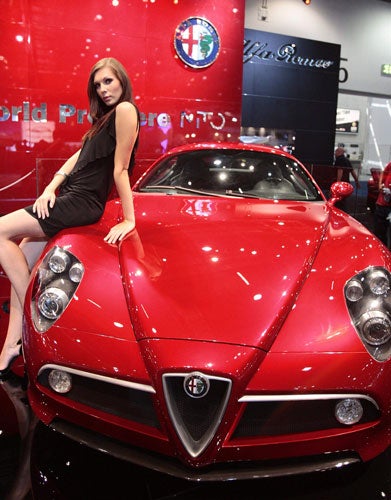It survived the Great Depression, but Motor Show is now cancelled

The recession has halted the 2010 British International Motor (BIM) Show, a feat only ever achieved before by a world war. At least half-a-million visitors were expected to flock to the event at the ExCel centre in London's Docklands next year. But vehicle sales are in such a parlous state that the big manufacturers – all of whom have cut production in recent months, and the majority of whom have cut jobs – are simply not able to commit the kind of seven-figure sums needed to fund a decent showing at the 10-day event.
Despite surviving the Great Depression unscathed, the glitz of the UK's biggest consumer exhibition simply no longer makes commercial sense – what with car sales down by more than a fifth in February alone and the carnage set to run into next year.
The BIM was the brainchild of Frederick R Simms, who founded the Society of Motor Manufacturers and Traders, which put on the first BIM in 1903. Paul Everitt, head of the SMMT, said yesterday: "The credit crunch has placed the automotive sector under unique pressure."
At the very first show, in Crystal Palace, 10,000 people flocked to gawp at horseless carriages. Pausing only briefly from 1914-18, and again from 1937-45, the BIM went from strength to strength. By the 1950s visitor numbers routinely topped half a million and as many as 50 new models were hitting the world stage at every event, including the Jensen 541, the first car with an all-plastic body and a top speed of more than 100mph. In the 1970s and 1980s, when the event was run at the NEC in Birmingham, up to a million people flocked to see world debuts like the Jaguar XJ220 and the Lotus Eclat.
In 2006, the BIM came back to London, and its character shifted again. The more consumer-led focus included a nightly musical called "Dock Rock". And punters were able to drive the exhibits as well as look at them. "We have to compete with a day out at Thorpe Park or Alton Towers," said a source at one big-name manufacturer. "From the days at the NEC when it was petrol heads drooling over static displays with glamour girls draped over them, it is now all interactive and full of ride and drive." Sadly it'll be none of those things in 2010.
Join our commenting forum
Join thought-provoking conversations, follow other Independent readers and see their replies
Comments